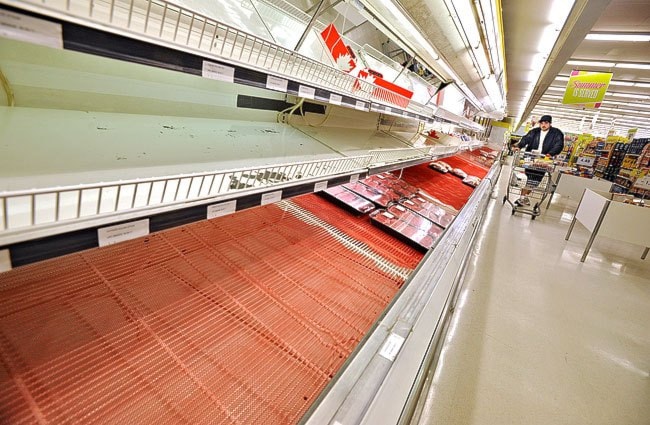Grief counsellors tell us there are five stages we pass through when we lose an important relationship: denial, anger, bargaining, depression and acceptance.
In terms of our on-again, off-again affair with the Alaska Highway gas pipeline, however, we are still in stage zero. Most Yukoners haven’t even heard it’s dead yet.
Every once in a while, most recently this winter, a Yukon politician will step up to the microphone and say that if Big Gas thinks it can just go ahead and lay pipe through the Yukon, Big Gas had better think again.
Well, it turns out that Big Gas has been doing a lot of thinking. And most of it seems to be about how to get northern gas to Asia, where natural gas prices are - literally - four to five times higher than in North America. A few weeks ago, gas was trading at over $15 per unit in Japan and under three dollars in North America.
The media reported last week that Alaska and the big three oil companies that operate in the state had agreed with pipeline player TransCanada to work on a plan to build a pipeline from the North Slope to Valdez or Kenai in order to ship liquefied natural gas to Asia.
Alaska’s government is pushing for development of gas resources since many are forecasting declining oil revenue for the state. “Alaska’s resources will be produced ... rather than remaining locked underground” is how Gov. Sean Parnell described the deal. Parnell also made a big deal of LNG is his recent State of the State address.
This route, of course, does not pass through the Yukon. The Alaska Highway route is still being considered, apparently, but leaks to Alaskan papers suggest not many in industry or government support the idea of building a longer and more expensive pipeline through the Canadian political and regulatory environment to markets with lower gas prices than Asia.
Meanwhile, to the east, the Mackenzie pipeline project is also in danger of disappearing into the ice fog. The Mackenzie Gas Project announced, also last week, that it was closing offices in Norman Wells and Fort Simpson, and downsizing in Inuvik. One of the partners, Shell, has been trying to sell its stake in the project for the last year, so far unsuccessfully. Another partner, ConocoPhillips, is writing down the value of its N.W.T. investments.
These are not the noises big companies usually make before they plunk down a few billion dollars in a big infrastructure project.
There are folks who will say, at least officially, that both pipelines are still alive. It is possible to concoct scenarios where the Alaska Highway pipeline gets built. However, people saying this risk sounding increasingly like John Cleese in Monty Python’s parrot salesman sketch. You remember: “He’s not dead! He’s resting!”
To some Yukoners this will be good news. Many Yukon environmentalists have opposed the pipeline for decades. Folks in Mary Lake who have a pipeline right-of-way just behind their backyards may also be relieved. It makes you wonder what kind of attractive sounding euphemism for “right beside a 48-inch high pressure gas pipeline” Whitehorse realtors would have come up with.
However, others will view it as a major economic loss. The dollar figures are certainly big. First Nations, municipalities and the Yukon government will miss the estimated $100 million per year in property taxes the pipeline would have brought. Another observation is that a gas pipeline would have likely had lower environmental impacts and risks than however many mines would be needed to generate equivalent tax revenue for 30 to 50 years.
The amazing thing is how long the pipeline saga has dragged on. I have vague memories of pipeline talk in the 1970s, and I once attended a retro 1980s party where my Foothills Pipeline hat was the hottest accessory (among welders of a certain age, anyway).
When I worked at the Department of Foreign Affairs in the 1990s, I was out in the department’s corridor jungle collecting my daily harvest of bureaucratic nuts and berries when I stumbled across the Northern Pipeline Agency. At the time, the agency ran under the aegis of Foreign Affairs since the Americans were involved. Even at the time it seemed like a strange throw back. I never saw the lights on in the office, and it seemed to be only a place to store disused office furniture and surplus ambassadors.
Activity picked up again when the project was revived over the last decade. The recent budget announced that this agency would get $47 million over two years, and its annual report says it has a half-dozen employees.
At least for now.
We will see how rapidly the oil companies and federal government ramp down their spending on the Alaska Highway pipeline. There is option value in the right-of-way and work completed to date, so it is unlikely to be completely shut down. But the number of employees, contractors and consulting projects may dry up significantly.
Some day, perhaps sooner than we think, we may have to confront the fact that the pipeline is dead for good.
Keith Halliday is a Yukon economist and author of the Aurore of the Yukon series of historical children’s adventure novels.
